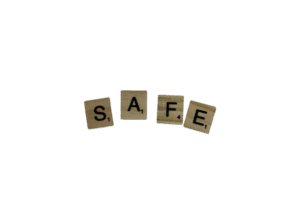💖 Choosing Kindness Over Conflict
This is about choosing kindness over conflict, especially when emotions run high. Your words can either heal or hurt, so pause before reacting and ask yourself: Am I adding to the storm or offering shelter? Being a safe space means listening without judgment, speaking with care, and validating feelings—even when you disagree with them. People in relationships need to hear “You matter to me” more often. When you prioritize emotional safety, you build trust and love that lasts.
🌿 Key Takeaways
- Offer warmth, not waves. Your presence should feel like shelter—a place where loved ones can exhale and be themselves.
- Listen with your heart, not just your ears. Sometimes, the most healing thing you can say is, “I'm here, and you're not alone.”
- Softness strengthens bonds. Love grows best in spaces free from harshness. “You matter to me” is a sentence every heart needs to hear.
⚓ Grounding Methods: How to Anchor Without Triggering
Grounding isn't just about pulling someone back to the present—it's about doing so in a way that doesn't inadvertently escalate their distress.
“I'm right here with you” often lands softer than “Just breathe.”
- Nonverbal cues, such as eye contact or a steadying touch, can reduce cortisol levels by up to 30%.
- Timing matters. Too soon may interrupt processing, and too late may feel like abandonment.
- Use phrases like “You don't have to hold this alone.”

🔍 Identifying Triggers: The Subtle Signs
Triggers often hide in plain sight. Tone, a phrase, or even the time of day.
- The body reacts first: posture shifts, eyes avert, and speech changes.
- 73% of triggers are tied to past unresolved experiences.
- Notice the absence. Silence when reassurance is expected can also be a trigger.
💬 Ask: “Did something about that conversation feel off to you?”
🛠️ Tools for Grounding: Techniques That Work
- 5-4-3-2-1 method: Engage all senses to redirect focus.
- Sync breathing for 2 minutes—boosts connection by 40%.
- Physical anchors: Weighted blankets, a shared cup of tea.
- Create a “grounding menu”: A list of techniques to choose from.
- Use rhythm and repetition: Walk, hum, knead dough together.
📘 “The goal isn't to erase emotion, but to make it manageable.”
🕊️ Calming Practices: Creating a Peaceful Atmosphere
- Light candles, play soft music, and add plants or sunlight.
- Set up a cozy space: Chair, blanket, notebook, or flowers.
- Natural elements reduce stress hormones by up to 17%.
🌬️ Mindfulness and Breathing Techniques
- 4-7-8 breath: Inhale 4, hold 7, exhale 8.
- Pair with grounding: 3 things you see, two hear, one feel.
- Shared pause: 30 seconds of silence resets rhythm.
- “Let's take a breath” is an invitation, not an interruption.
📘 Couples who practice mindfulness report 23% fewer conflicts.
👂 The Power of Active Listening
- Not just hearing—holding space for the unsaid.
- Mirror phrases: “It sounds like you felt…”
- Phone down, eye contact, silence.
- Notice body language: “I'm sensing this is weighing on you.”
- Paraphrase to reduce miscommunication: “You're saying… and need…”
💬 “Tell me more about that.”
🛡️ Building Trust: Being Someone's Safe Space
- Listen without interrupting.
- Avoid fixing; offer presence.
- “I'm here, and you're not alone,” says it all.
Examples:
- A friend texts after a rough day.
- A coworker checks in privately after a tense meeting.
Small, consistent actions build deep trust.
🎭 Real-Life Scenarios: What It Looks Like
- Partner comes home frustrated: Say, “That sounds exhausting. Want to tell me more?”
- A friend opens up: Share similar moments to normalize.
“I've been there too—it's so hard.”
Safety is not about fixing—it's about presence.
💗 The Role of Vulnerability
- Expressing vulnerability = deeper trust (62% stronger bonds).
- “I don't have this figured out either,” invites honesty.
- Laughter, fears, and flaws = human.
A client story: “I'm overwhelmed—can we talk? ” Vulnerability in marriage.
📘 Vulnerability is the bridge between loneliness and a sense of belonging.
🚀 Closing the Gap: Moving from Awareness to Action
- Emotional safety = daily practice.
- Small moments matter: “How can I make this easier for you?”
- Research: 34% higher satisfaction when emotional safety is prioritized.
“I'm here, and I'm not going anywhere.”
✅ Actionable Steps to Foster Emotional Safety
- Micro-commitments: Put your phone down and give verbal acknowledgments.
- “Turning toward” moments: Respond to sighs or comments.
- Name emotions: “That sounded frustrating—did I get that right?”
- Normalize feelings: Create shelter, not a battleground.
🗣️ Encouraging Open Communication
- Replace “you” with “I” to avoid defensiveness.
- Use silence to invite honest replies.
- Two-sentence check-in: “How's your heart today? Anything I can do?”
- Weekly “temperature talks”: Share highs and lows.
📘 These tools increase emotional safety and understanding.
🫶 Summing Up
Being a safe space means choosing kindness, understanding, and patience. It's not about perfection but about showing up with heart.
“You don't have to face this alone—I'm here with you.”
You can be the calm in someone's storm.
❓ FAQ
Q: What does it mean to “be the safe space, not the storm”?
A: Create an environment of ease and support. Choose kindness over blame.
Q: How can I practice being a safe space?
A: Listen without interrupting, validate feelings, and offer gentle presence.
Q: What if I become the “storm” during stress?
A: Acknowledge, apologize, reconnect with warmth.
Q: How do I know if I'm providing emotional safety?
A: If your partner opens up and seeks comfort from you, you're on the right track.
Q: Can a relationship recover if emotional safety was missing?
A: Absolutely. With consistency and care, trust can be rebuilt.




